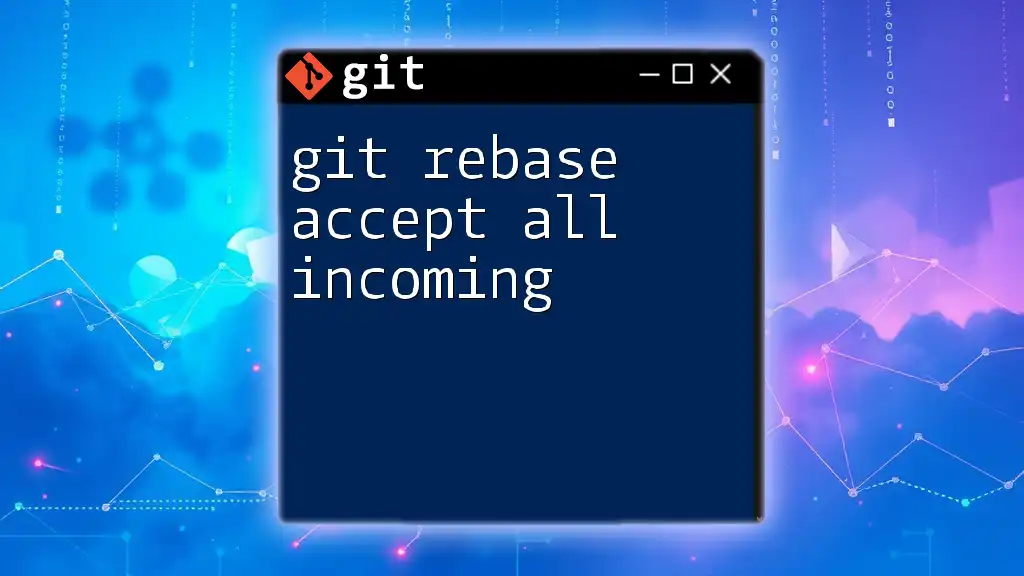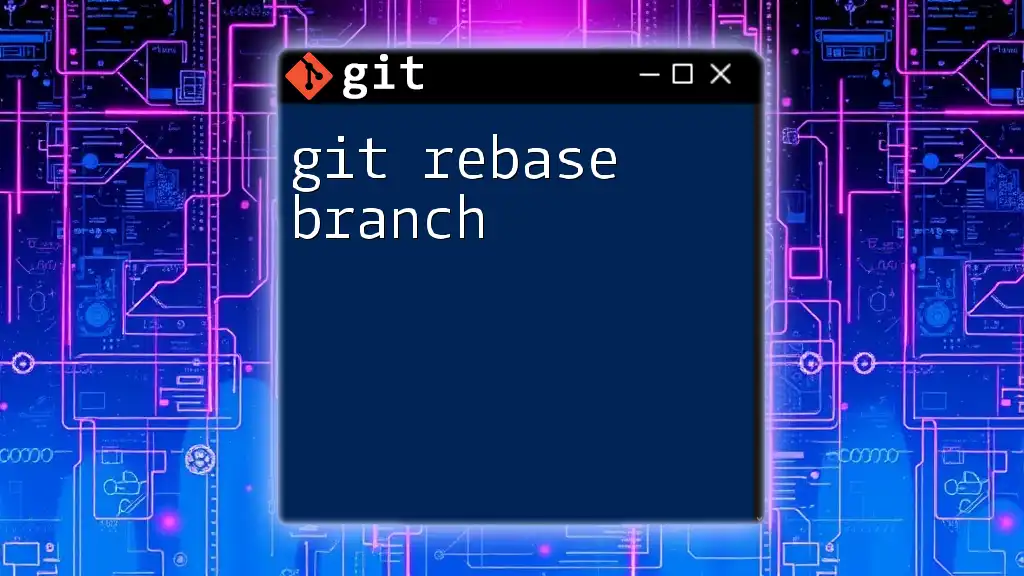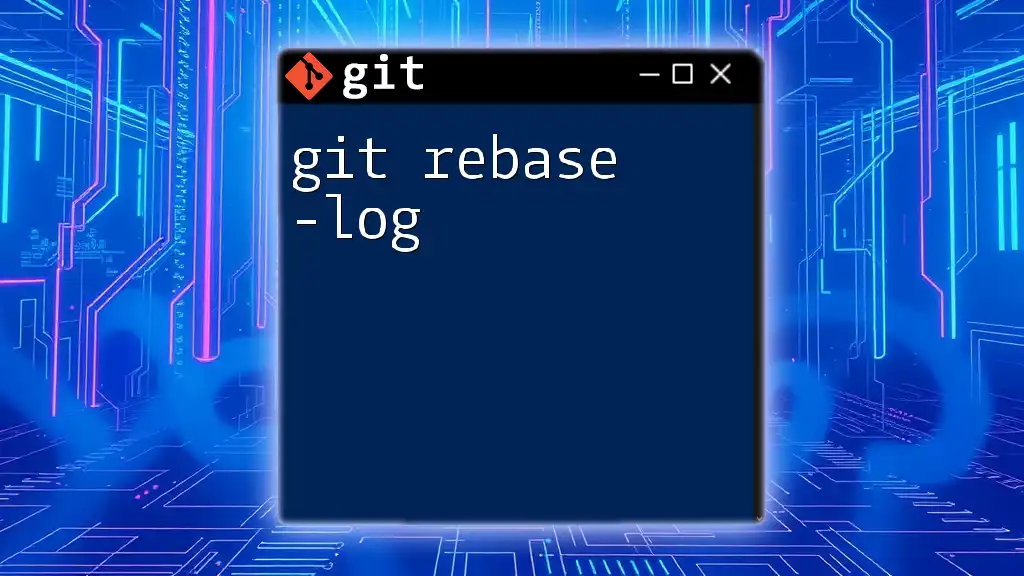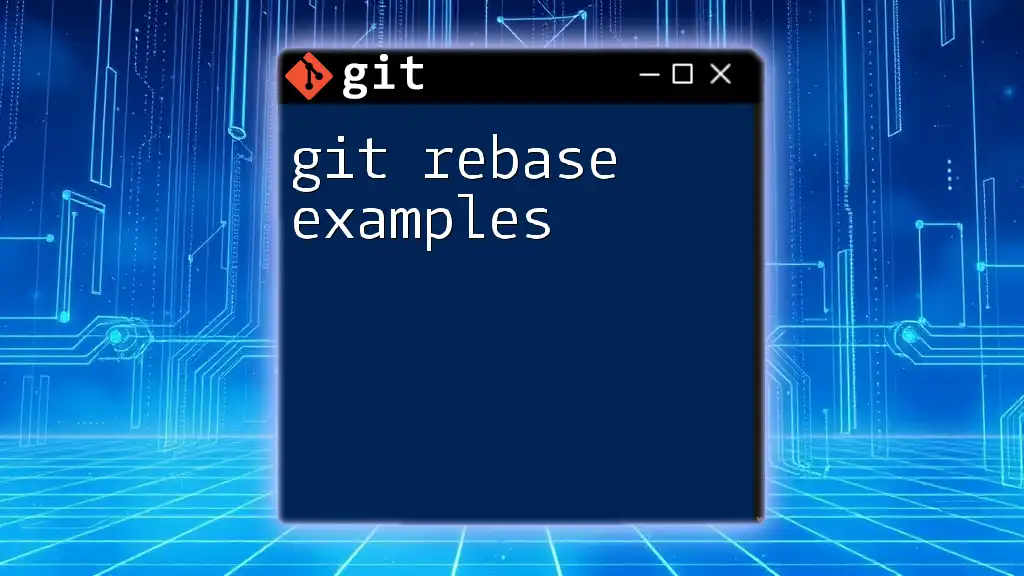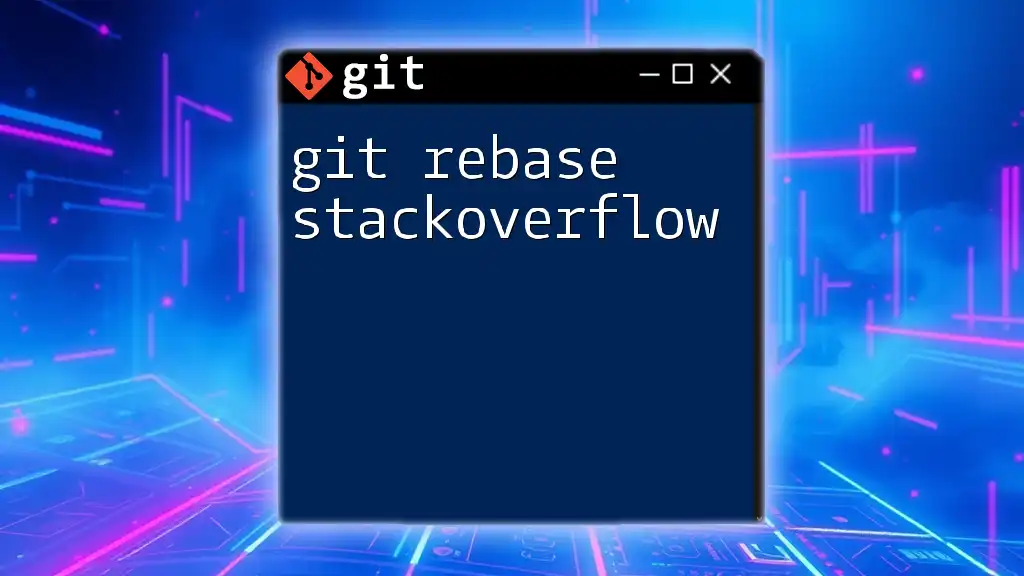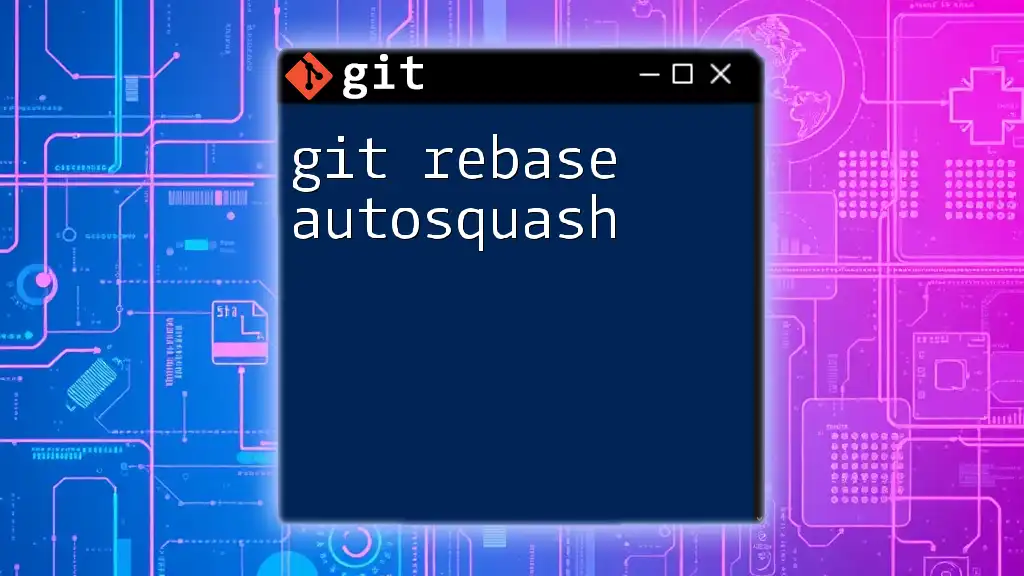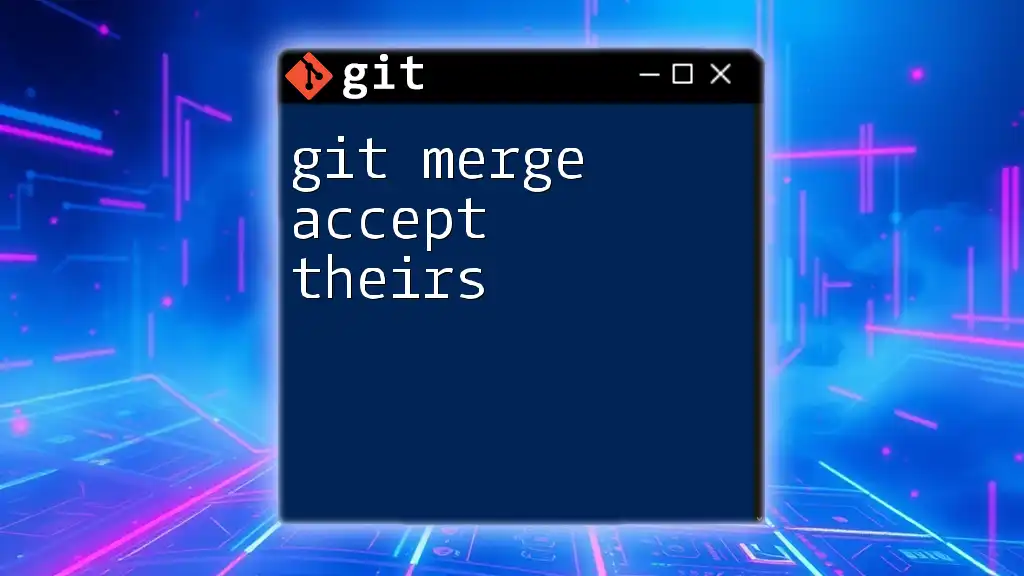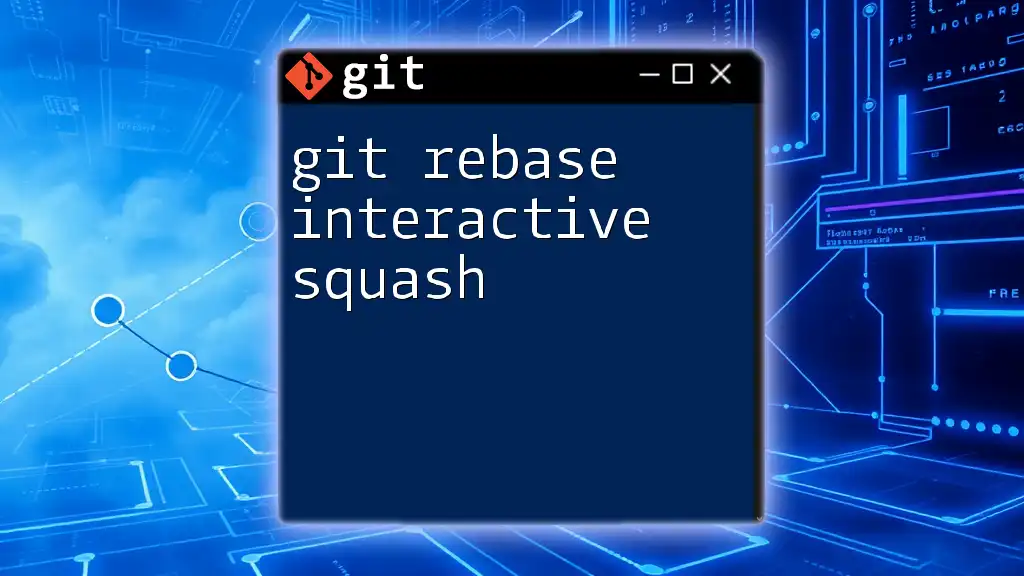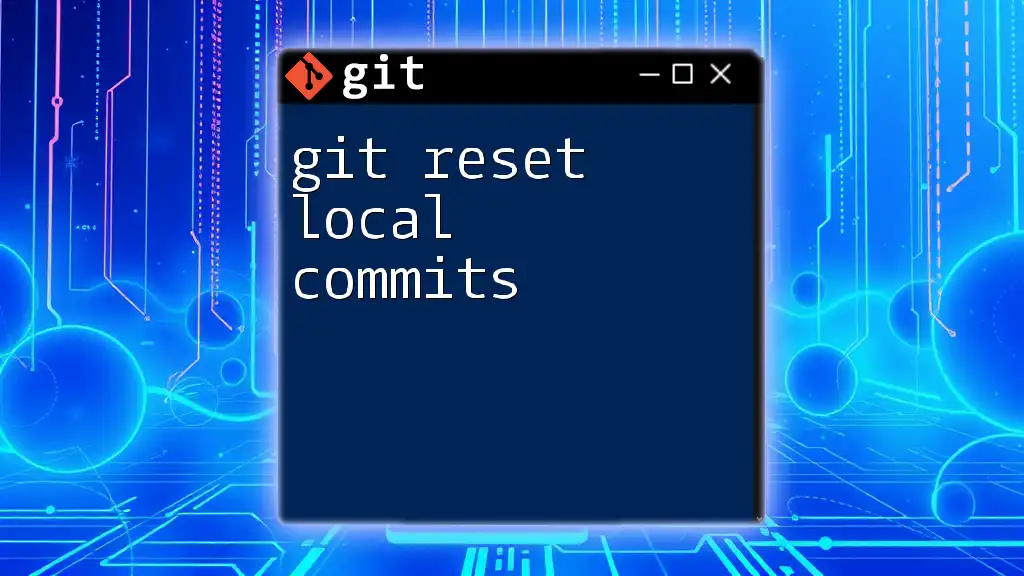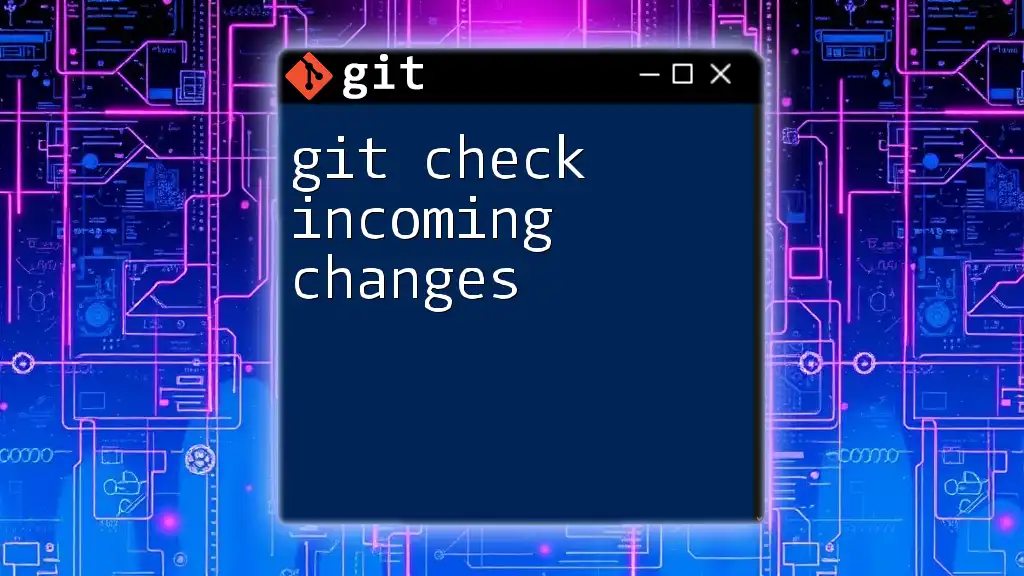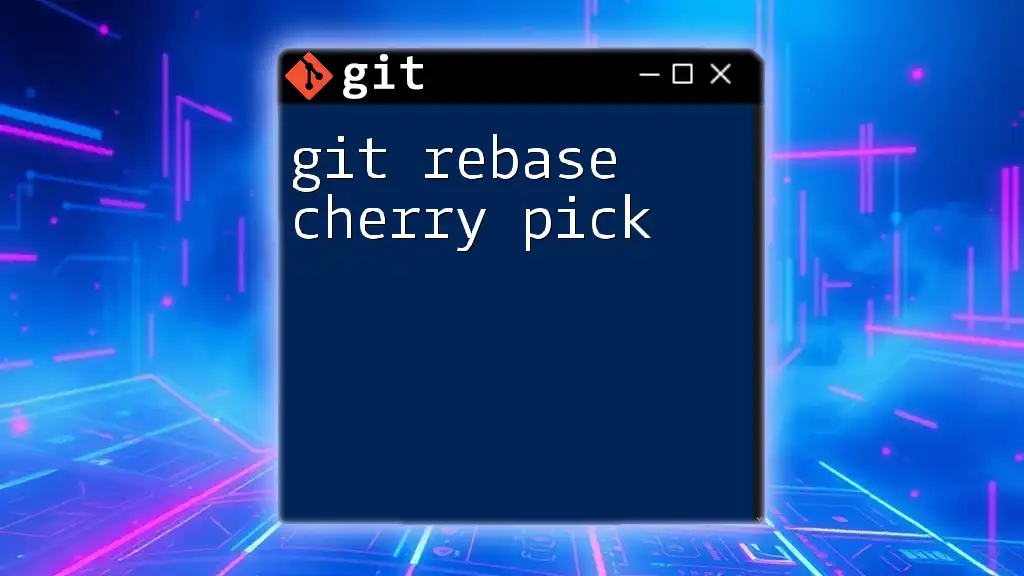The command `git rebase --strategy-option=theirs` allows you to automatically accept all incoming changes during a rebase, effectively overwriting your local changes with the incoming branch's changes.
git rebase -s theirs <branch-name>
Understanding Git Rebase
What is Git Rebase?
Git rebase is a command that allows you to move or combine a sequence of commits to a new base commit. Unlike merge, which creates a merge commit and preserves the history of both branches involved, rebase rewrites commit history by applying changes from one branch onto another in a linear fashion. This keeps your project history clean and makes it easier to understand the evolution of your code.
When to Use Git Rebase?
You typically use rebase when you want to:
- Clean up commit history – Before pushing commits to the main branch, rebase allows you to combine related commits into a single one, making it easier to read and follow.
- Integrate changes from the main branch – When your feature branch has diverged significantly from the main branch, rebasing your branch onto the latest version of the main branch can streamline integration.
However, rebase is not always advisable. Avoid it when:
- A branch has already been published and shared with your team, as rewriting history can confuse collaborators.
- The branch has a complicated history that you want to preserve in its entirety.
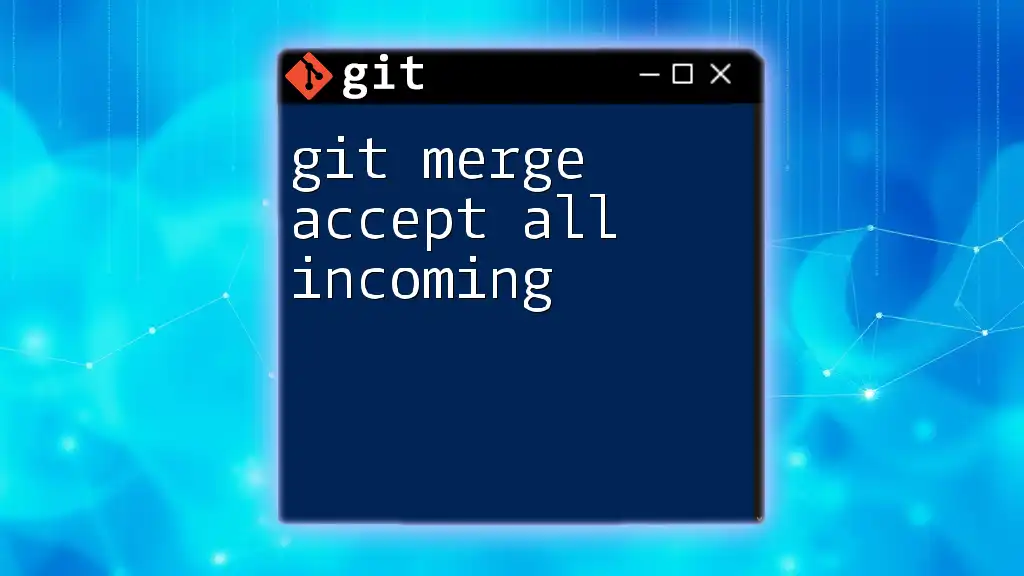
The "Accept All Incoming" Strategy
What Does "Accept All Incoming" Mean?
In the context of git rebase, the "accept all incoming" strategy refers to a method where you automatically resolve conflicts during the rebase process by choosing the incoming changes from the branch you're rebasing onto. In this case, you're effectively ignoring the local changes on your feature branch in favor of the commits being applied during the rebase.
How to Enable the "Accept All Incoming" Strategy
To start using this strategy, begin by initiating a rebase operation. Here’s how to do it:
git rebase branch-name
Replace `branch-name` with the target branch (e.g., `main`) that you want to rebase onto. During this process, if you encounter conflicts, you can decide to accept all incoming changes.
Resolving Conflicts with "Accept All Incoming"
Rebasing might result in merge conflicts when your local changes overlap with the incoming changes from the branch you are rebasing onto. You can use the `--theirs` option to resolve these conflicts automatically by accepting incoming changes.
To do this, follow these steps:
- Identify the files with merge conflicts.
- Use the following command to resolve the conflict by accepting the incoming changes:
git checkout --theirs <file-path>
Replace `<file-path>` with the actual path of the conflicted file. This command tells Git to keep the changes from the incoming branch and discard your local changes for that specific file.
Example Scenario: Accepting All Incoming Changes
Imagine you are collaborating on a project where Developer A and Developer B are working on the same feature branch. If you need to update your feature branch with the latest changes from the main branch, follow this example:
-
Start by checking out your feature branch:
git checkout feature-branch -
Pull the latest changes from the main branch:
git pull origin main -
Begin the rebase process:
git rebase main -
If conflicts arise, decide to accept all incoming changes by resolving them with:
# Resolve conflicts git checkout --theirs <conflicted-file> git add <conflicted-file> # Continue rebasing git rebase --continue
By following these steps, you’ve successfully resolved conflicts using the "accept all incoming" strategy and completed the rebase.
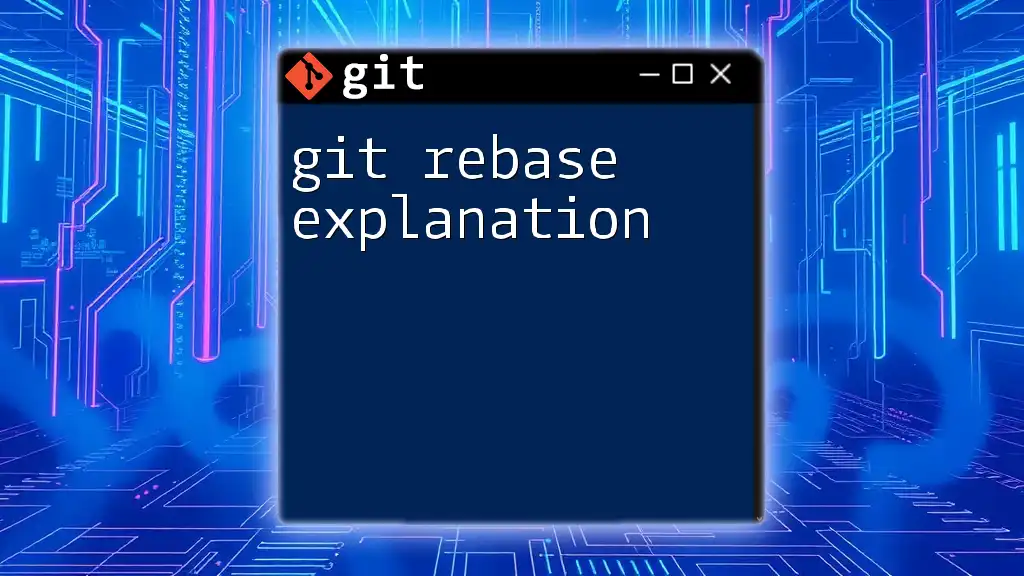
Best Practices When Using "Accept All Incoming"
Ensure You Understand the Changes
Before accepting incoming changes during a rebase, it is critical to review the differences. Use the following command to compare the changes before proceeding:
git diff
Understanding what you are accepting helps prevent unintended data loss and ensures that you are aware of the modifications being made to your codebase.
Maintain Consistency in Your Branch
After completing the rebase, make sure that your feature branch maintains the expected functionality. It may be beneficial to run tests or audits on your code to ensure everything works as expected. Communication is key in a team environment; inform your teammates about the changes that occurred to keep everyone aligned.
Commit Messages and Documentation
It's essential to record your changes accurately. Post-rebase, maintain clarity in your commit messages to reflect the updates you've accepted. Consider documenting notable resolutions to conflicts, especially if they involve significant changes or decisions that could impact the project in the future.
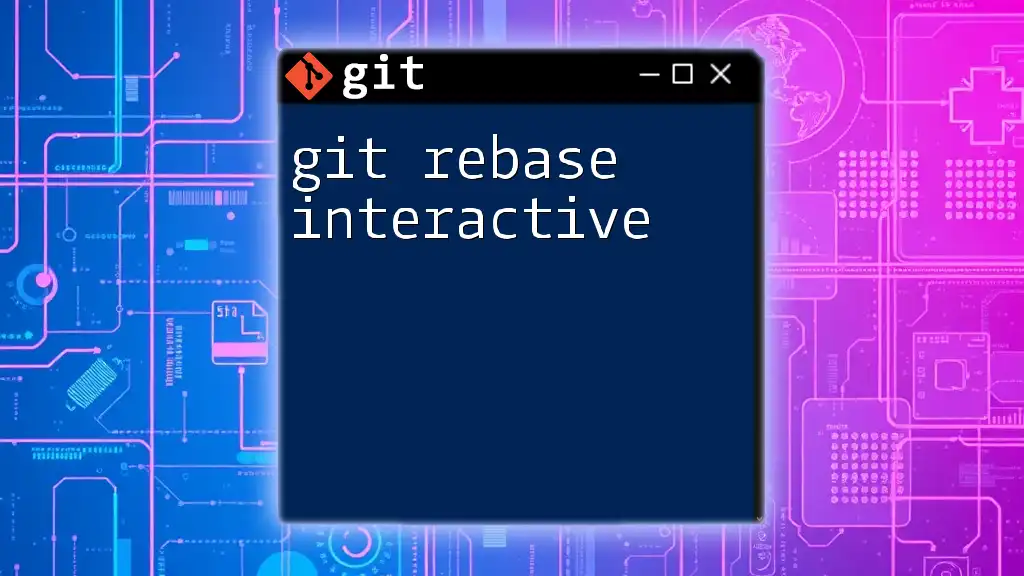
Common Pitfalls and How to Avoid Them
Overwriting Valuable Changes
One major risk when using "accept all incoming" is the potential to overwrite local changes that are important. To mitigate this, carefully evaluate conflicts before resolving them. Consider creating a temporary branch to back up your current work before proceeding with a rebase.
Confusion with Merge vs. Rebase
It’s crucial to understand the key difference between merge and rebase. While merging preserves the entire commit history, rebasing rewrites it into a more linear narrative. Always choose the one that best fits your project's workflow and goals, and communicate with your team to ensure everyone is on the same page.
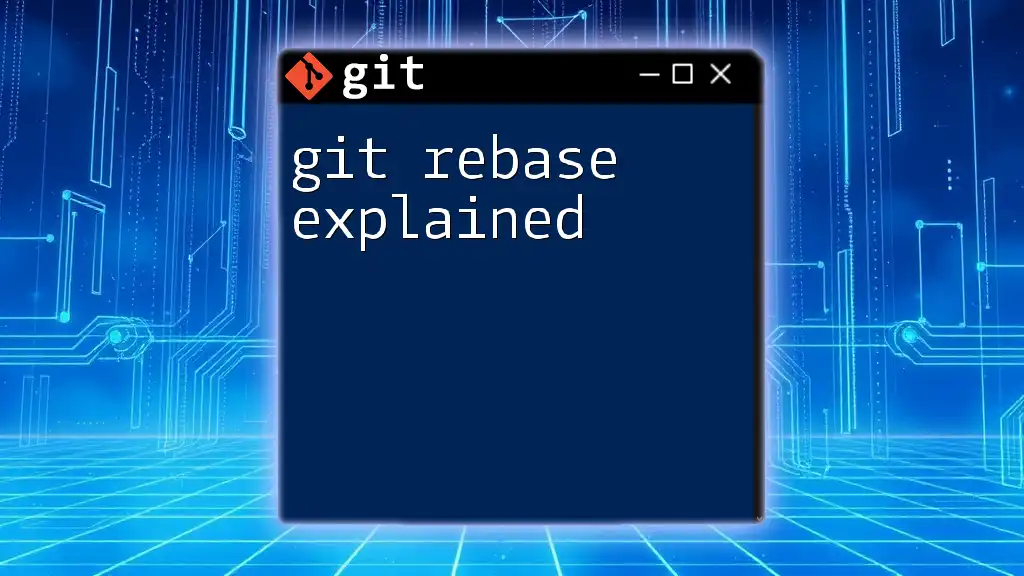
Conclusion
Understanding how to effectively use the git rebase accept all incoming strategy can significantly enhance your workflow in version control. While it offers a streamlined way to manage conflicts during a rebase, it’s essential to proceed with caution. Keep practicing these concepts, and don’t hesitate to seek out more advanced Git strategies as you grow more confident in your skills.
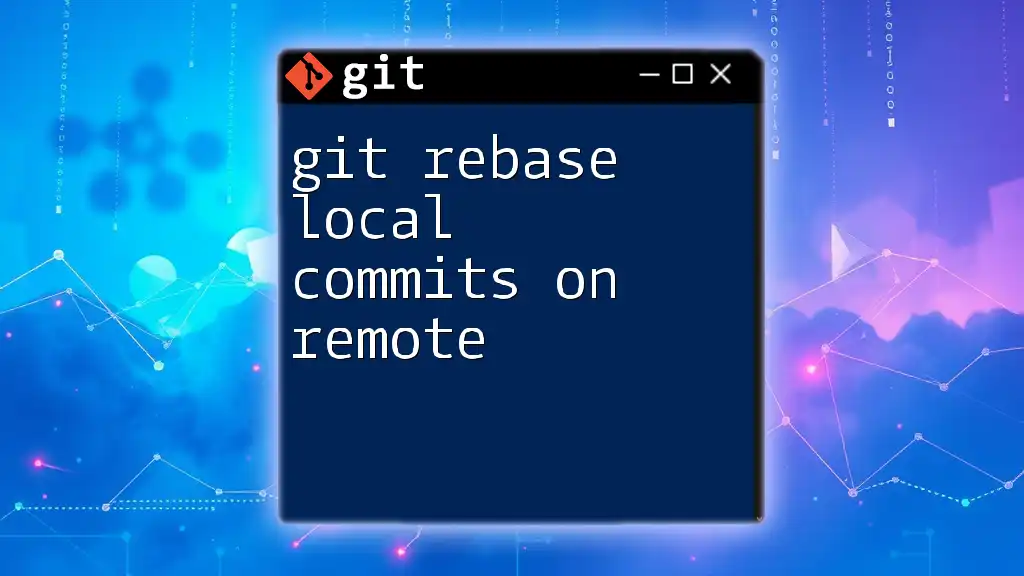
Further Resources
To deepen your knowledge of Git and its functionalities, consider exploring:
- The official Git documentation
- Comprehensive Git courses on various educational platforms
- Community resources where you can ask questions and share experiences with Git

FAQs
What should I do if I accidentally lose important changes during a rebase?
If you find that you’ve lost changes, you can often recover them using the `git reflog` command, which allows you to see a log of where your HEAD has been. This way, you can identify and checkout previous states of your branch.
Can I use "accept all incoming" in a non-rebase scenario?
While the "accept all incoming" method is specifically relevant in the context of a rebase, similar resolution strategies can apply during a regular merge conflict, where you may choose the incoming branch’s changes over your current branch.
How does rebasing affect the commit history?
Rebasing modifies the commit history by creating new commits based on the changes incorporated during the rebase process. This means that while merging preserves the historical context of the branches involved, rebasing provides a cleaner, linear sequence of changes that can make it easier to understand the evolution of your code.
Utilizing git rebase accept all incoming can help streamline your development process, provided that you approach it with an understanding of the potential consequences. Remember, practice and careful consideration are key to mastering Git operations!

